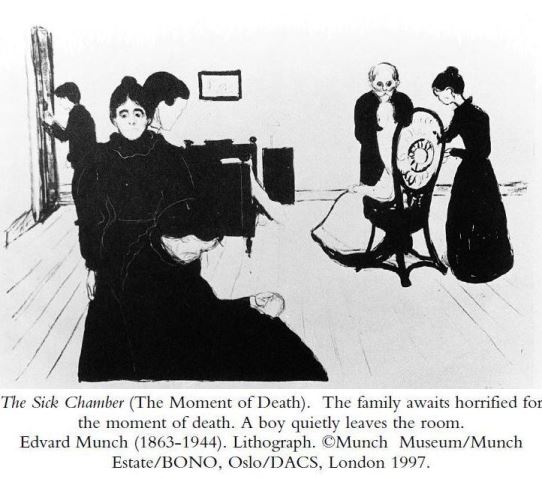Support us
As a charity we rely on your donations to fund our free exhibitions, school activities and online resources
Empowering medical excellence, shaping healthcare futures.
‘Captain of all these Men of Death’, the Great White Plague’ – the public fear of this great killer is clear from the many names which have been ascribed to it.
Since the eighteenth century tuberculosis has been a major cause of death throughout the world.
The toll of tuberculosis on both its sufferers and their families has been widely recorded, often by artists and writers who were themselves afflicted - including Jane Austen, Franz Kafka, George Orwell and Anton Chekhov. Tuberculosis was seen by some as a ‘romantic disease’, associated with sensitivity and creativity. The slow death of its sufferers allowed them the opportunity to write and create art about their experiences.
The Norwegian painter Edvard Munch (1863-1944), whose best known work is ‘The Scream’, lost his mother and sister to the disease. Munch wrote that ‘Disease, insanity and death were the angels which surrounded my cradle’. His works, including ‘The Sick Chamber’, shown below, demonstrate the impact of tuberculosis on his life and work.

In the 1880s the German physician Robert Koch developed a staining method to examine the sputum of tuberculosis patients which allowed, for the first time, the cause of the disease to be identified. Mycobaterium tuberculosis. Although Koch failed in his attempts to provide a cure for the disease, his work enabled the effective identification of sufferers.
Increased study of the disease and understanding of its highly contagious nature led to the development of isolated institutions for sufferers.

The sanitoriums which were developed provided patients with relaxing surroundings in which to recover. And, more importantly, their exposure to fresh air and sunlight assisted recovery by increasing vitamin D and nitric oxide levels, thereby improving their immune systems.
Christopher Clayson and David Boyd on treatment of tuberculosis at Edinburgh's Southfield Sanatorium:
One man who was at the forefront of twentieth century tuberculosis treatment, and President of the Royal College of Physicians of Edinburgh, was Sir John Crofton.
Crofton was born in Dublin, Ireland, before studying at the University of Cambridge and taking up posts first in London, and then at the University of Edinburgh in 1952.
John Crofton, William Alexander and Joyce Grainger on the history of tuberculosis in Scotland:
Crofton developed what came to be known as the ‘Edinburgh Method’ for treating tuberculosis.
Chemotherapy had already been in use to treat this disease for around a decade when Crofton settled in Edinburgh. Crofton's innovation, in essence, entailed the combining of chemotherapy with the use of multiple drugs simultaneously to reduce the chance for drug-resistant strains of tuberculosis to develop.
Levels of tuberculosis declined dramatically in Edinburgh as a result of Crofton’s work and he spent most of the rest of his career travelling around the world teaching other practitioners about his methods.
David Boyd and John Crofton on treatments for tuberculosis:

Support us
As a charity we rely on your donations to fund our free exhibitions, school activities and online resources